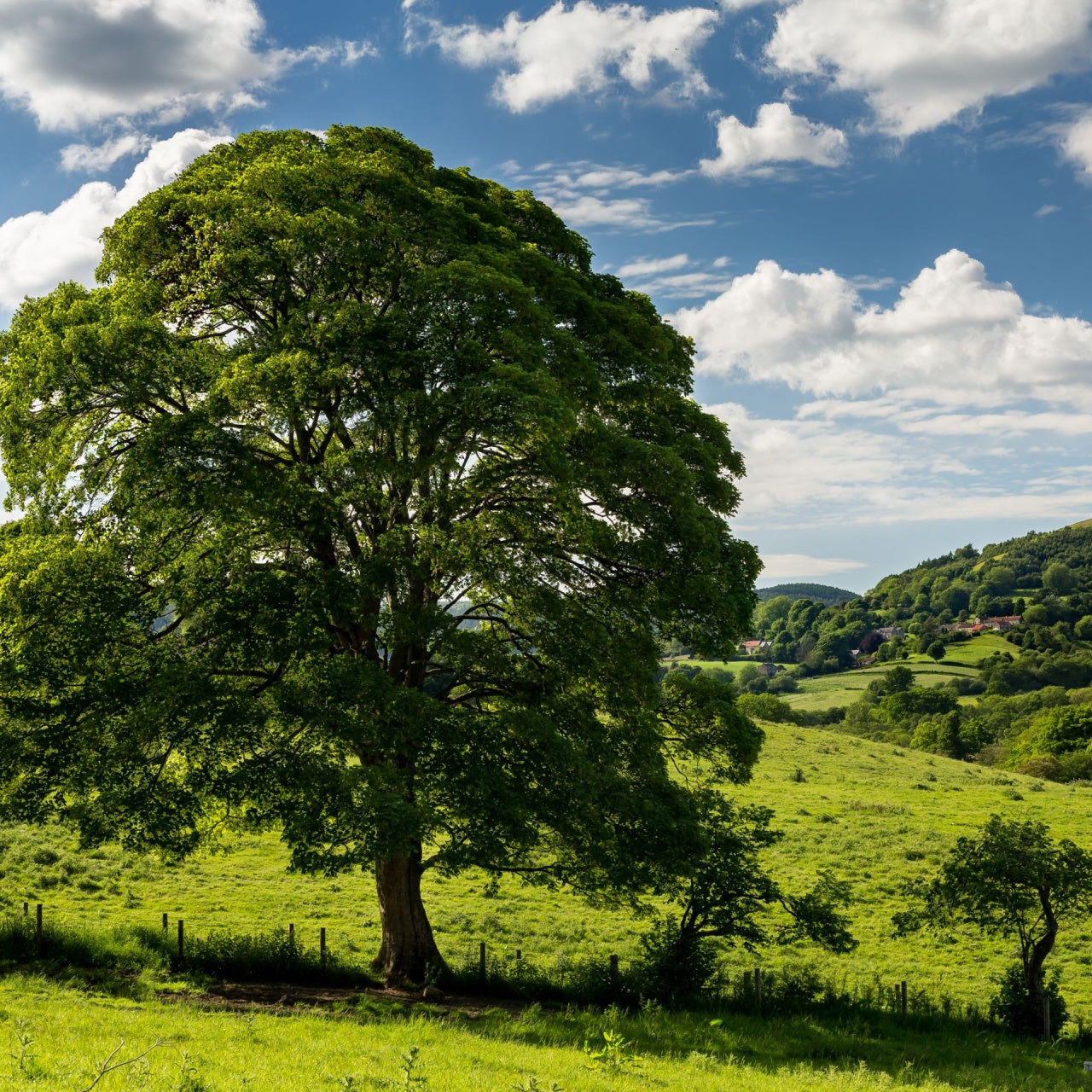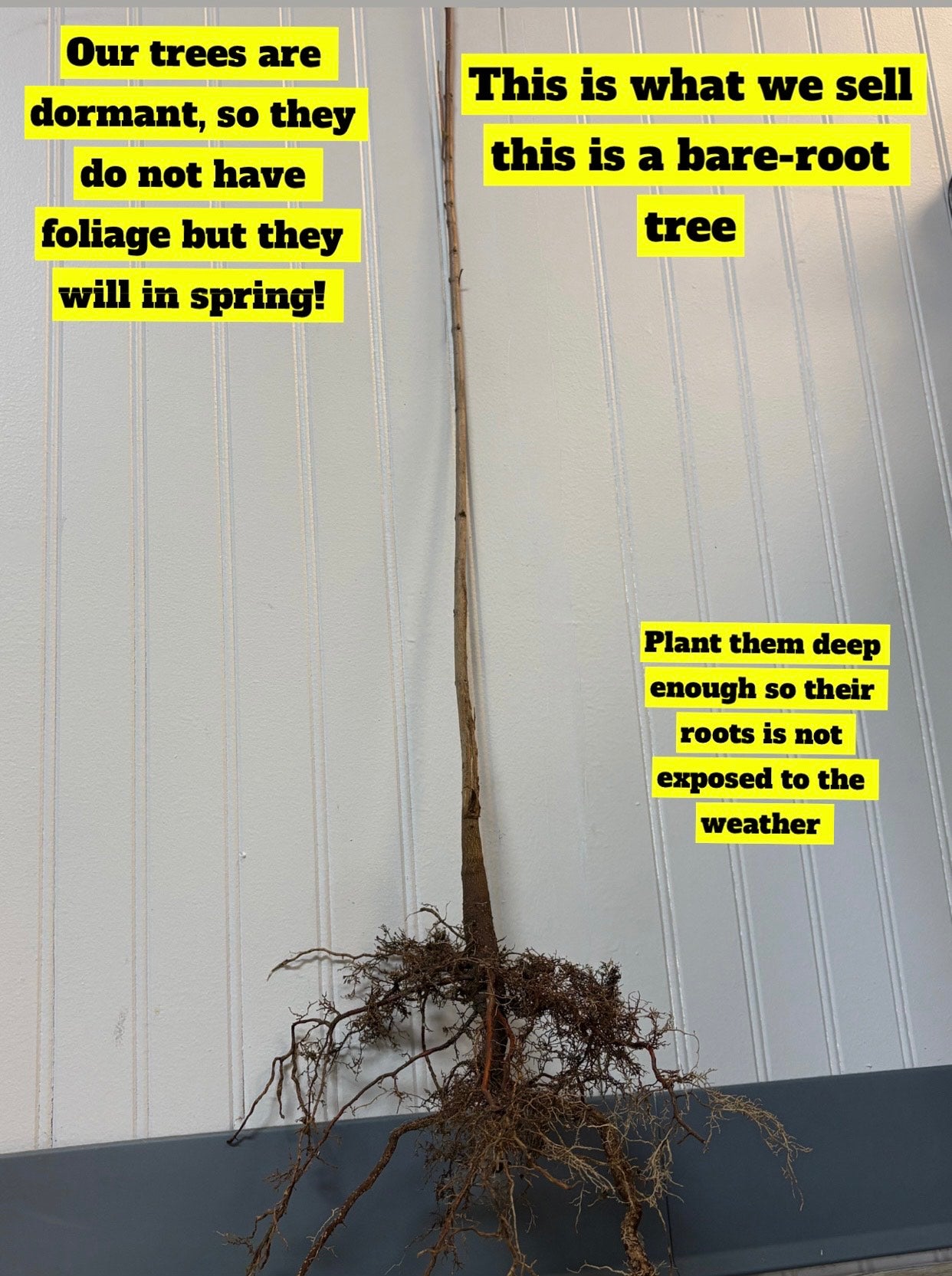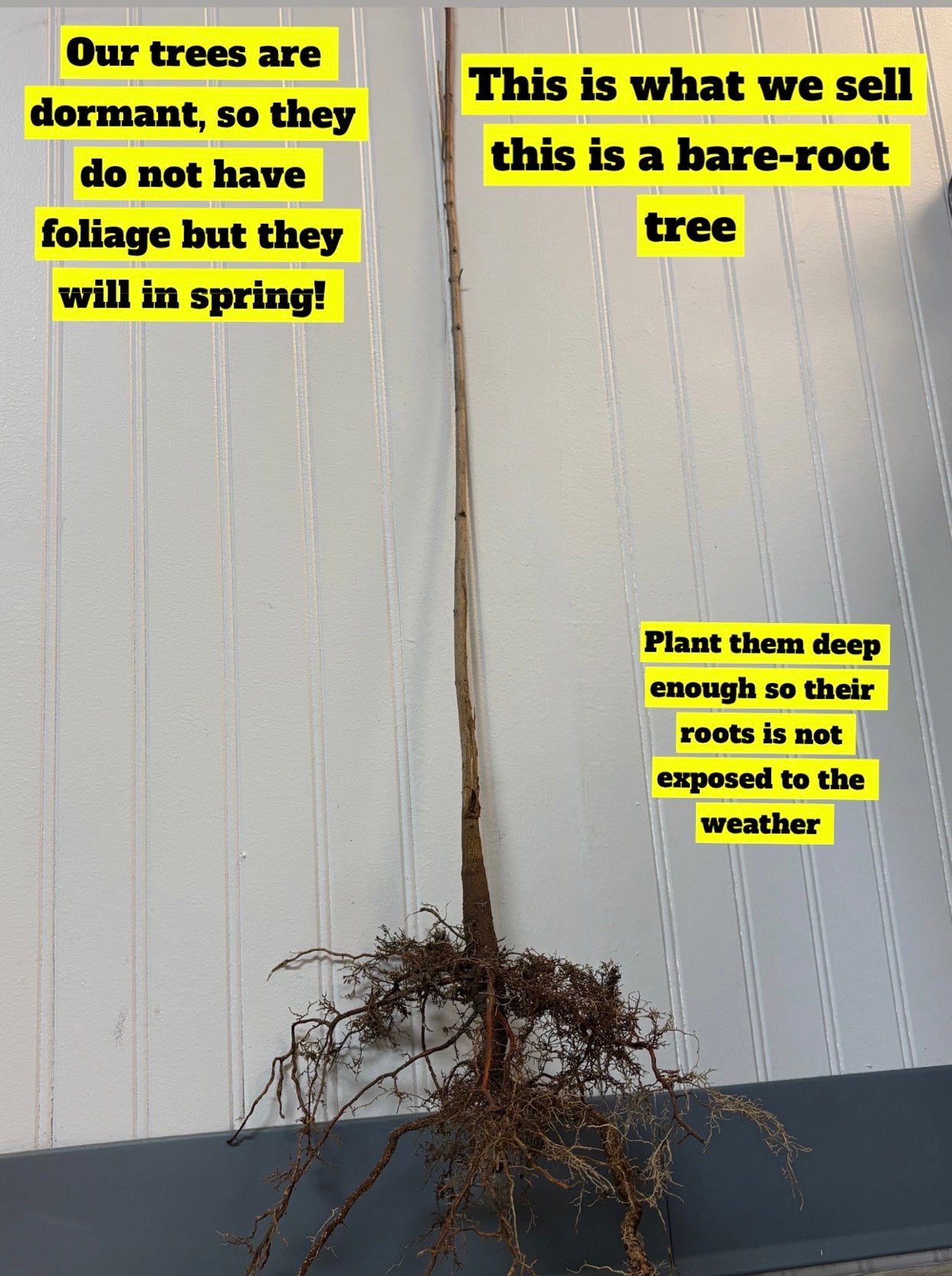



Removes & Absorbs Toxins
Improves Air Quality
Low maintenance & easy to grow
Buy Sycamore Trees Online
The Sycamore Tree (Acer pseudoplatanus) is one of North America's most impressive native shade trees. Growing at a rapid pace of up to two feet per year, it quickly develops into a massive specimen, reaching 75-100 feet tall with a wide-spreading crown. Its distinctive mottled bark, vibrant green summer foliage, golden-yellow autumn color, and spherical seed clusters make it a standout choice for landscapes that call for beauty, shade, and longevity.
Key Features of Sycamore Trees
-
Fast growth - Reaches 75-100 feet tall with a trunk over 10 feet in diameter
-
Beautiful bark - Red-brown near the base, transitioning to light gray-white, with mottled peeling texture
-
Seasonal interest - Creamy spring leaves, large green summer foliage, golden-yellow fall color, and seed clusters in winter
-
Wildlife-friendly - Provides nesting for birds, climbing space for squirrels, and dense shade for families
-
Hardy & resilient - Tolerates poor soil, withstands hurricanes, ice storms, and urban conditions
-
Excellent shade tree - Large leaves and wide-spreading crown create a natural cooling canopy
Planting & Growing Information
| Attribute | Details |
|---|---|
| Botanical Name | Acer pseudoplatanus |
| Type | Deciduous shade tree |
| Mature Height | 75-100 ft |
| Mature Spread | Nearly equal to its height |
| Growth Rate | Fast (approx. 2 ft per year) |
| Hardiness Zones | 4-9 (sometimes 6-10, depending on region) |
| Soil Preference | Deep, fertile, well-drained soils; tolerates acidic to alkaline conditions |
| Light Needs | Full sun |
| Maintenance | Low; prune in spring if needed |
| Lifespan | Very long-lived; plant where you want it permanently |
Pro Tip: Because of its massive size and spreading root system, plant away from foundations, driveways, or septic lines. Ideal for parks, large properties, riverbanks, and spacious yards.
Seasonal Beauty & Landscape Benefits
-
Spring: Creamy young foliage and spherical seed clusters begin forming
-
Summer: Dense, dark-green canopy provides cooling shade
-
Fall: Large leaves turn a glowing golden-yellow to reddish-orange
-
Winter: White-mottled bark and seed balls add ornamental interest
Landscape Uses:
-
Large shade tree for spacious yards or estates
-
Natural focal point in open landscapes
-
Riverbank or woodland plantings
-
Long-term legacy tree for future generations
Shipping & Guarantee
-
Shipped bare-root for quick establishment and healthy growth
-
Carefully packaged for safe arrival
-
Backed by Tennessee Wholesale Nursery's 65+ years of expertise in native trees and plants
FAQ - Sycamore Trees
Q: Growth Rate?A: On average, they grow about 2 feet per year, making them one of the fastest-growing shade trees.
Q: How big at Maturity? A: Mature trees reach 75-100 feet tall, with trunks growing over 10 feet in diameter.
Q: Are These Trees messy?A: They shed bark, leaves, and seed balls seasonally, but many gardeners consider this part of their natural beauty.
Q: Can They Live In tolerate poor soil?A: Yes. They prefer deep, fertile soil but will adapt to a wide range of soil types and pH levels.
Q: How long do Sycamore Trees live?A: Sycamores are long-lived trees, often surviving for several centuries when planted in ideal conditions.
Q: Are Sycamores good for wildlife?A: Yes - birds nest in them, squirrels climb their branches, and their shade benefits people and animals alike.
This Is How Your Plants Will Look upon Delivery
Shipping date depends on the date displayed and chosen when you order from the product's page.
We do not offer warranties on products after 5 days past receiving your plants.
Our Blogs
By signing up, you agree with our privacy policy.






